Solution Review
ChatGPT AI Detection Tools

Since December 2022 we review and analyze applications to verify and detect AI-generated content. Here’s a list of the best ChatGPT detectors so far according to our rating system:
- Detector.dng.ai
- Detector by WRITER
- Smodin’s Ai Content Detector
- AI Text Classifier by OpenAI
- GLTR – Giant Language model Test Room
- Content at Scale – Chat GPT detector
- Crossplag AI Detector
Detectchatgpt.com– ⛔ It doesn’t work Now.GTPzero.me– ⛔ It doesn’t work Now.
ChatGPT is a language model developed by OpenAI Team. It is an AI-powered chatbot that can generate human-like text based on the input it receives. It can be used for a variety of applications, including conversational interfaces, content creation, software development, and answering questions.
The model has been trained on a large corpus of text data and uses advanced machine-learning techniques to generate relevant and coherent responses.
OpenAI is also reportedly developing a mobile app that will use GPT-4.
Why do coders create many AI detection Tools?
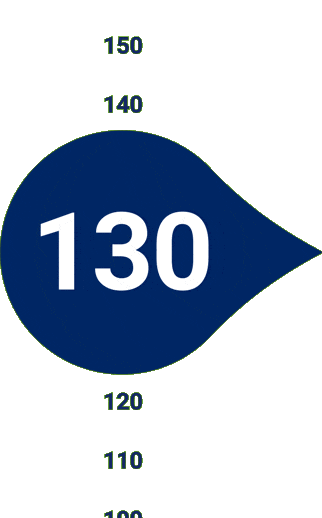
Developers create AI detection tools because they are in high demand for various applications such as security, fraud detection, intrusion detection, and user behavior analysis. These tools are needed to help organizations and individuals automatically detect and prevent various forms of cyber threats and malicious activities.
Additionally, AI detection tools help improve the efficiency and accuracy of these processes, making them more effective than traditional manual methods.
AI is legit for the education process?
AI tools can be seen as bad for education in schools for several reasons:
- Lack of creativity: AI tools can sometimes limit creativity and imagination in students by providing only pre-determined answers and solutions.
- Limited critical thinking: AI tools can also limit students’ critical thinking skills as they rely on pre-existing algorithms and formulas to solve problems.
- Bias: AI algorithms can sometimes perpetuate existing biases and inaccuracies, which can negatively impact the education and learning of students.
- Dependence: Relying too heavily on AI tools can make students dependent on technology, leading to a loss of problem-solving skills and independent thought.
However, it’s worth noting that when used in conjunction with human guidance and instruction, AI tools can be a valuable resource for education and learning.
AI detection tools can be used in education for various purposes, such as:
- Plagiarism detection: To check if students have plagiarized content in their assignments or papers.
- Grading: Automating the grading process, providing faster and more efficient feedback to students.
- Personalized learning: AI tools can analyze a student’s performance, learning style and preferences to provide personalized recommendations for learning material.
- Early identification of struggling students: AI tools can detect students who are struggling in class and provide targeted support to help them succeed.
- Enhancing online learning: AI tools can facilitate online learning by providing students with real-time feedback and support.
- Predictive analytics: AI tools can analyze student performance data to identify trends and predict future performance, allowing educators to take proactive measures to support student success.
Note: It is important to consider ethical implications of AI use in education and ensure that students’ privacy and data security are protected.
ChatGPT banned from New York City public schools’ devices and networks / Read here.
Share the link to the ChatGPT detector. My latest search results in some very suspicious sites…
From the first day of this year, I started learning and testing these apps. I spent more than 40 hours on it and I want to share my results. Please understand that this is a real and practical experience. Over time, we will add our own evaluation system to assess them objectively.
#1 I was using detectchatgpt.com – ⛔ But It doesn’t work Now.

- I would not encourage the use of automated AI-text detectors. I’ve read about how these work. They really primarily on the text is correct in spelling, punctuation, and grammar.
- Do not work now!
#2 The next one is Detector.dng.ai
- This detector analyzes different fingerprints left by the AI models that allow us to determine if a text has been written by an AI or a human.
- Minimum characters: 600
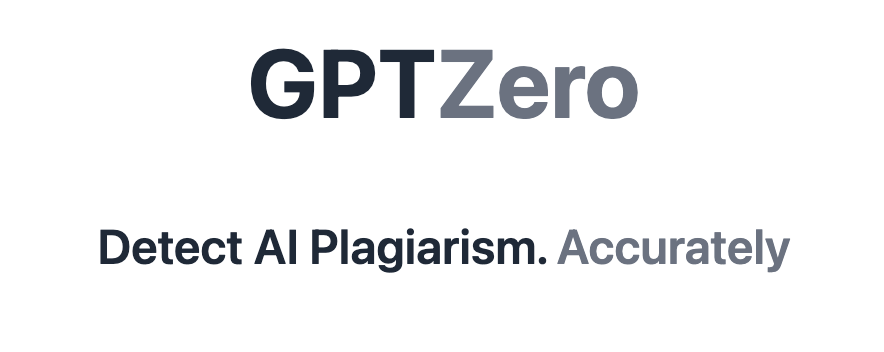
#3 Detect AI Plagiarism with GPTzero:
- Tested – a good result.
This is incredible. Not even a software dedicated to determining its origins can clearly determine if it was AI generated or not. We’ve literally just entered an entirely new world, and we are either going to have to adapt or deal with the fact that we can’t determine actual intelligence from Artificial intelligence.
Captain Picard
#4 AI Text Classifier:
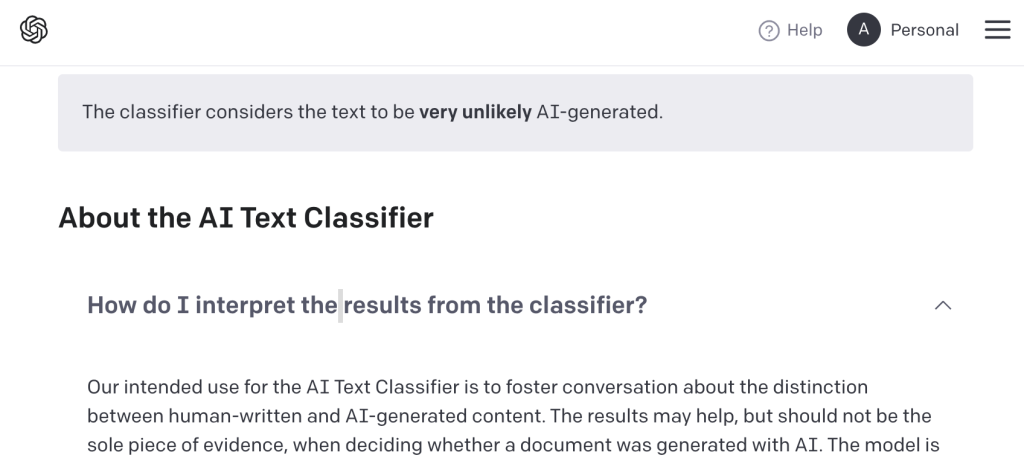
https://platform.openai.com/ai-text-classifier
- The AI Text Classifier is a fine-tuned GPT model that predicts how likely it is that a piece of text was generated by AI from a variety of sources, such as ChatGPT.
5 more tools:
- AI Content Detector by Writer Writer.com/ai-content-detector/ – The Best Tool!
- AI Detector by Content at Scale Contentatscale.ai/ai-content-detector/ (marked AI text)
- Crossplag AI Detector Crossplag.com/ai-content-detector/ (Available 10 Free Credits)
- Smodin’s Ai Content Detector – smodin.io/ai-content-detector
- Giant Language model Test Room Gltr.io/dist/index.html
Disclaimer:
It’s important to understand that AI Content Detector tools are not infallible, and their accuracy may vary depending on a variety of factors, including the quality and nature of the content being analyzed, the parameters set by the user, and the limitations of the tool itself.
Therefore, any decisions made based on the results of an AI Text Detector tool should be carefully reviewed and verified by a human expert or professional in the relevant field. Additionally, it’s important to use such tools responsibly and ethically, taking into consideration the privacy and intellectual property rights of others, as well as any legal or regulatory requirements that may apply to the use of such tools.
-

 Marketing Tips2 days ago
Marketing Tips2 days agoWhat is my Instagram URL? How to Find & Copy Address [Guide on Desktop or Mobile]
-

 Business Imprint4 days ago
Business Imprint4 days agoAbout Apple Employee and Friends&Family Discount in 2024
-

 App Development3 days ago
App Development3 days agoHow to Unlist your Phone Number from GetContact
-
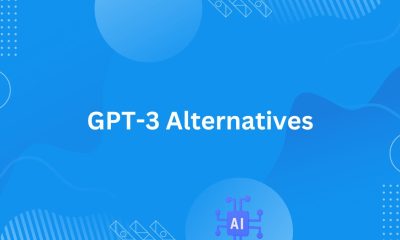
 News5 days ago
News5 days agoOpen-Source GPT-3/4 LLM Alternatives to Try in 2024
-

 Crawling and Scraping5 days ago
Crawling and Scraping5 days agoComparison of Open Source Web Crawlers for Data Mining and Web Scraping: Pros&Cons
-
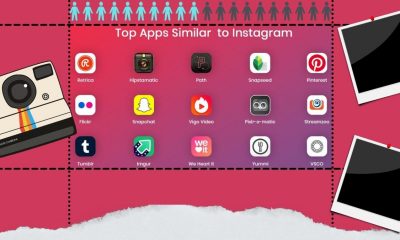
 Grow Your Business2 days ago
Grow Your Business2 days agoBest Instagram-like Apps and their Features
-

 Grow Your Business5 days ago
Grow Your Business5 days agoHow to Become a Prompt Engineer in 2024
-
Marketing Tips2 days ago
B2B Instagram Statistics in 2024



